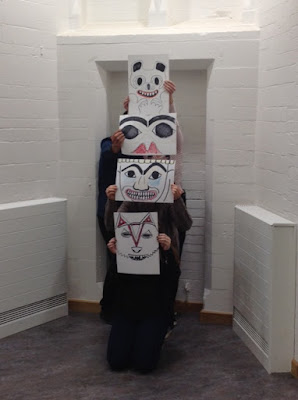After taking part in the
Bookfeast Festival, hosted by the
Pitt Rivers Museum, the
Oxford University Museum of Natural History and
The Ashmolean, Oxfordshire primary school pupils were invited to write a story opening which had a strong sense of place. After attending author events linked by the theme of 'Once Upon a Place', and participating in Creative Writing Workshops run by
OUMC Education staff and
Flashes of Splendour, many pupils were inspired to enter the competition. Read the winning entries of the
Bookfeast Creative Writing Competition here.
Years 5 and 6
First Prize
Hanan Hussain
(Year 6, St Michael’s CE Aided Primary School)
Day of the Dodo
 |
| The Dodo Walks Out © Oxford University Museum of Natural History |
This story starts in Oxford, in the early Victorian era, before the Dodo became extinct. That is an important fact, remember it. It was early morning and gentlemen in sleek black top hats and ladies with fancy lace dresses were bustling around. This, along with poor people crying on the streets, was a common sight. Not so common was the dodo that waddled through St. Giles, seemingly heading for that huge monument located there. Once the Dodo had reached the monument it tapped it with its beak. And, as if by magic, a hole appeared and the Dodo walked through.
Second Prize
Lola Meyer
(Year 6, St Barnabus Primary School)
The Bird Box
 |
| Key from the Pitt Rivers Collection 1901.49.33 © Pitt Rivers Museum |
At the end of a tiny back garden in central Oxford, there is a colossal oak tree. Hidden between the overgrown ivy and gnarled branches, there is a small, rusty keyhole. The key to it is kept in the handmade wooden bird box at the very topmost branches of the old oak tree. Nobody has ever discovered what is inside the tree. However, a nine- year-old girl has just moved into the house and she adores climbing trees. Inside the tree is a secret library filled with books such as Spying on Birds and Hypnotizing Hedgehogs.
Third Prize
Darkness. Darkness so Deep.
Darkness. A darkness so deep it could terrify even the bravest. All those times when I was little, hiding under the bed sheets afraid of what lay in the dark…And then as I stood there, the darkness seemed to be breathing slow, shallow breaths, but when I listened I could hear nothing. We all get that feeling sometimes, there’s something there, something we can’t see. A sudden light illuminates a barren landscape; ruins of a mighty house, now cracked and covered in moss. Old pines spring up in random places. I take a few steps and turn around…
Fourth Prize
Beatrice Vincent-Ratti
(Year 6, St Aloysius Catholic Primary School)
Kaia Ran
Kaia ran. Through maze-like roads, through narrow streets. All she could hear was the padding of her feet and her jagged breathing. Eerie sodium light burned the darkness. It felt peculiar to run through these streets with nobody around. In the daylight, it was teeming with life. Now everything seemed sterile and spooky. The houses were quiet; the kind of silence after an attack. Kaia stopped. The repugnant smell of the alleyway’s decaying food hit her nose hard. Bags lay piled up, the contents spilling open. Dark walls seemed to be closing in on her. Snap! She turned…
Years
3 and 4
First Prize
Lorien Bray
(Year
4, Little Milton Primary School)
The
Fairyland Forest
Wondrous
and amazed, I gazed absently into the never-ending canopy of this fairyland
forest. As I came to my senses, I realized that I was in a small clearing
surrounded by tall, leafy trees that reached the sky and waved slowly in the
light breeze. Around the trees, exquisite birds flutter while they sing a
beautiful tune. On the ground condensed soil lies silently and peacefully. My
nose tells me that damp moss covers the soft earth. In the distance, a stream
trickles enchantingly. My footsteps crunch loudly on the mixed dirt and bark.
Second Prize
Millie Elwin
(Year
3, Little Milton Primary School)
A Dark
Gloomy Forest
There
was a dark, gloomy forest. As the thick trees swayed side to side, it looks
like the midnight starry sky gets darker. Sometimes it smells like dead flowers
and dry fruit. It’s horrific. You don’t want to go there. As the misty moon
rises, you can hear 1000 packs of howling wolves.
Third Prize
Imogen Hobbins
(Year
3, Beckley School)
How
Birds Learnt to Fly
Have
you ever been sitting in your garden on a summer’s day and watched a bird fly?
Well, they didn’t use to do that. This is how it all began.
Way
back when humans weren’t invented, well almost, there was a land called
Canaloo. There were sparkling, raging waterfalls, lots of neon palm leaves and
thousands and thousands of different coloured birds. There were yellow
long-tailed birds, green sparkling chirpy ones, blue water canary ones and the
most beautiful bird, Falona, the red phoenix. The only problem was none of them
could fly.



































